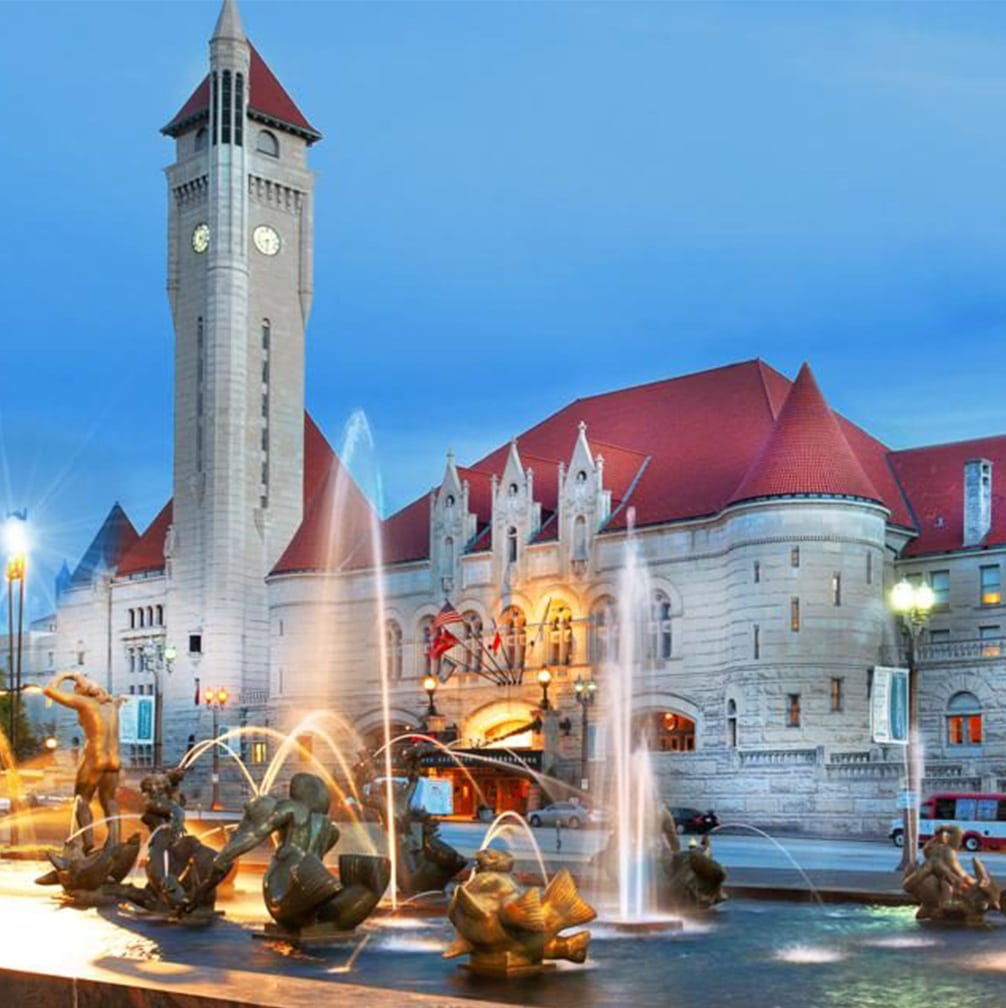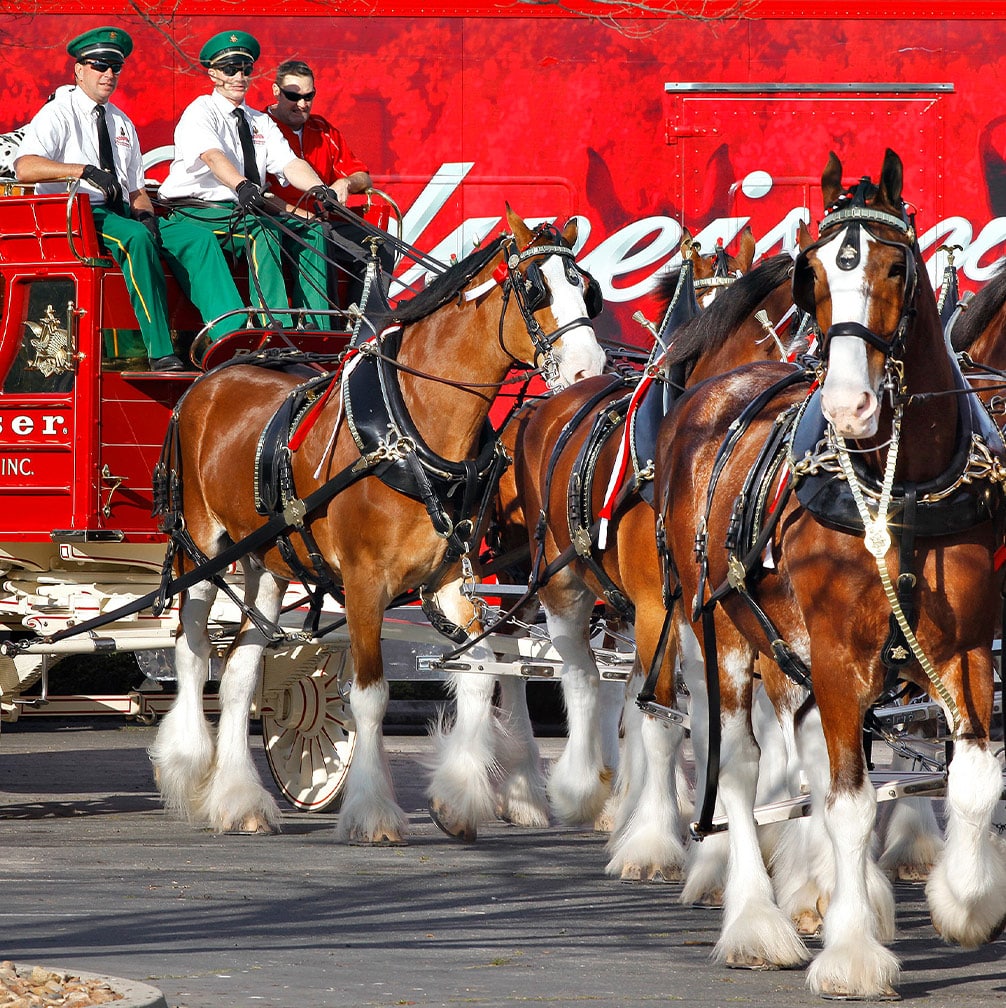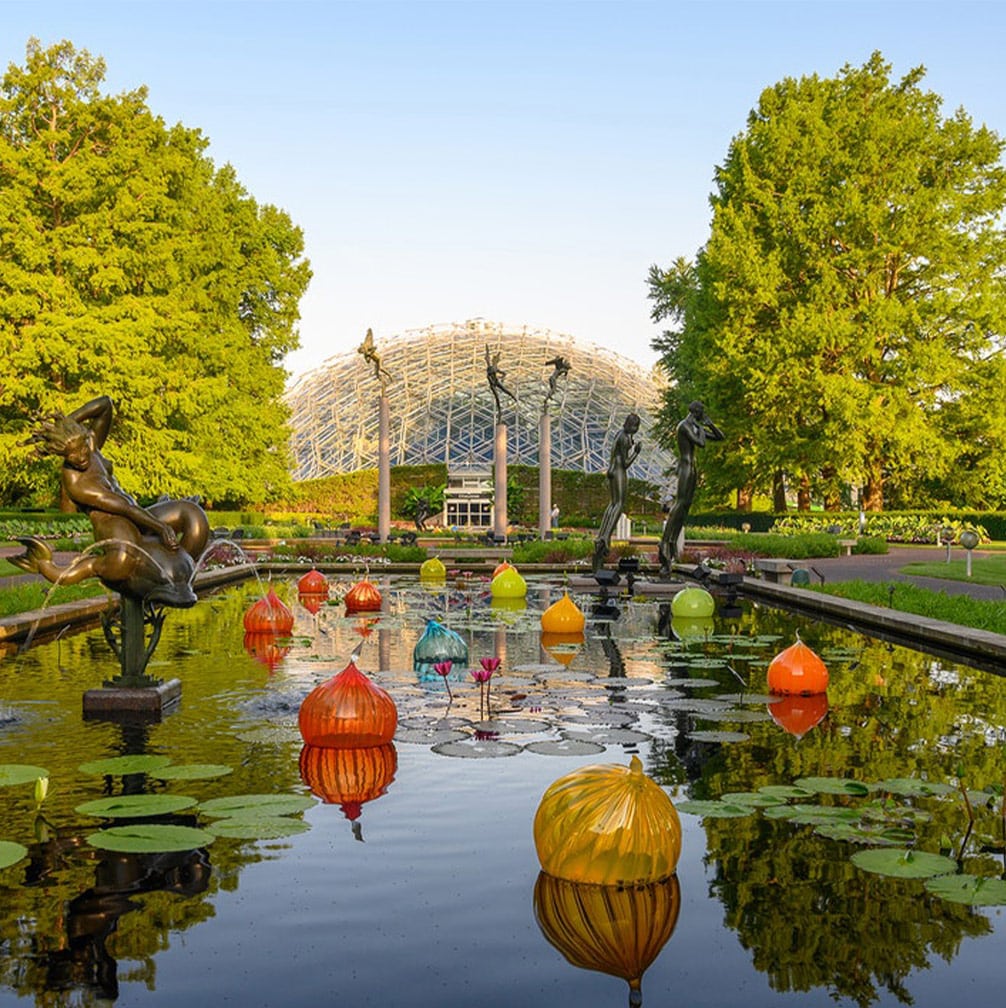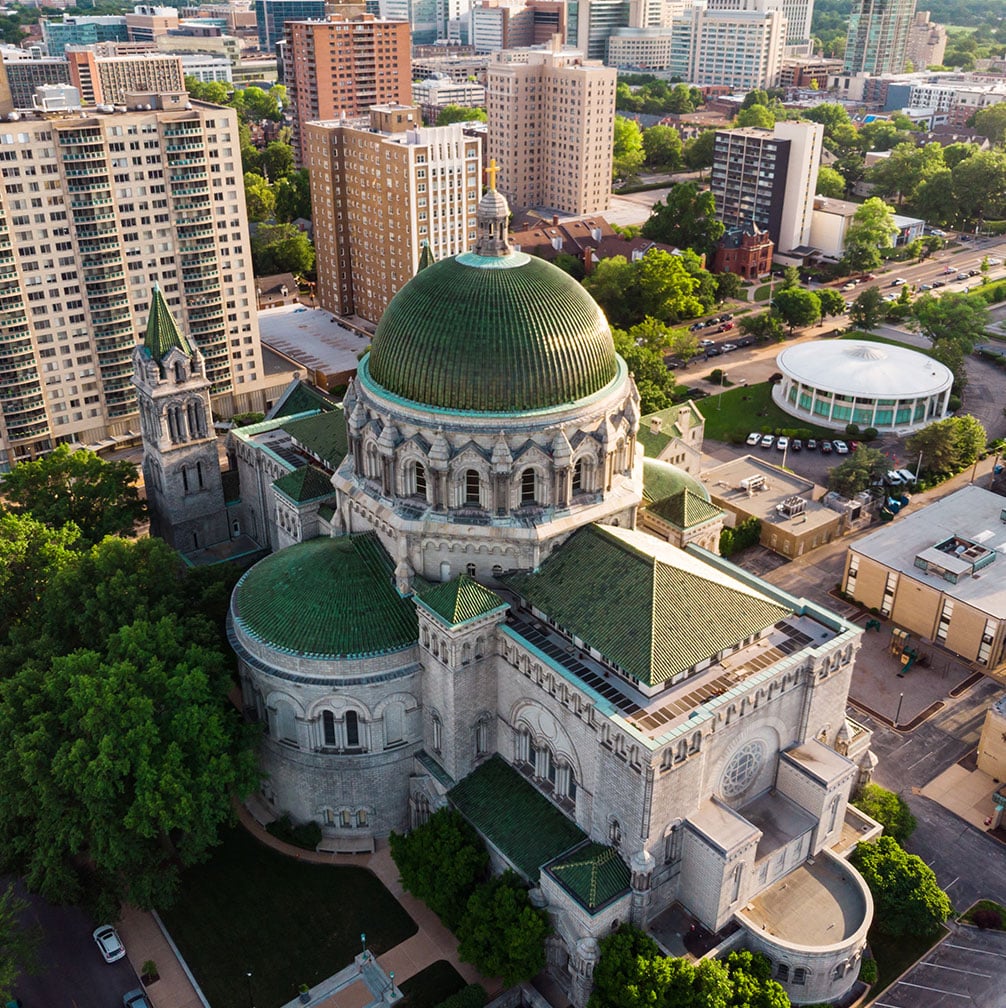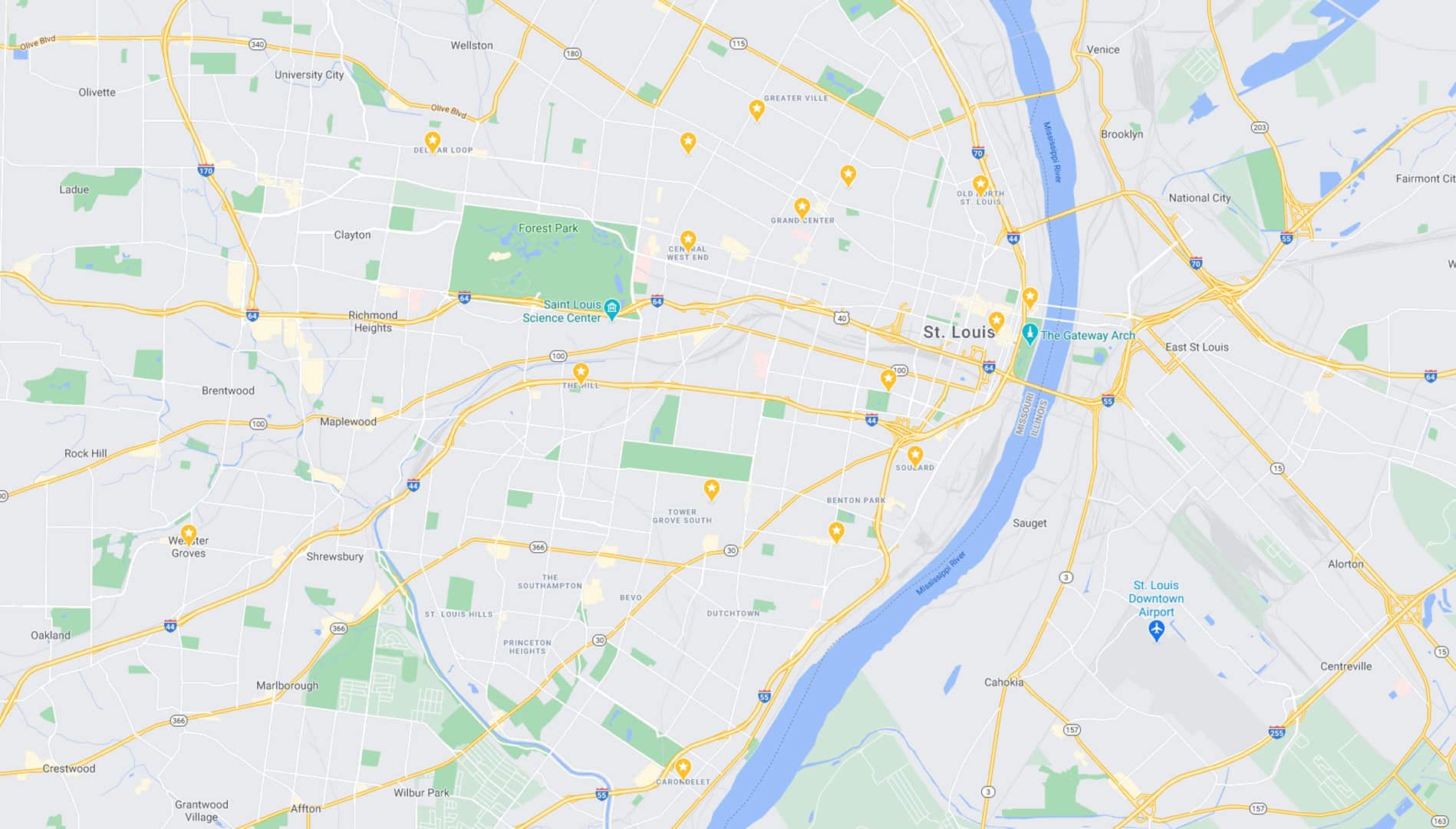St. Louis: The Gateway to the West
Outside of our downtown St. Louis campus, the discoveries are endless in the big city with a small town feel. Here, you can explore St. Louis and learn about our favorite parts of the city.
Come discover the wealth of attractions St. Louis has to offer in culture, arts, outdoors, medical and tech industries, and memorable architecture. With affordable housing and close-knit communities, St. Louis is the ideal place for students to advance toward their dream careers.
Things to Do in St. Louis
There’s never a dull moment in St. Louis. Beyond these must-see spots, view a full list of upcoming events in the St. Louis area for more fun activities.
EAT + DRINK
SEE + DO
EXPLORE
Things to Do in St. Louis
There’s never a dull moment in St. Louis. Beyond these must-see spots, view a full list of upcoming events in the St. Louis area for more fun activities.
EAT﹠DRINK
SEE﹠DO
EXPLORE
In addition to being home to the PHSU St. Louis campus, historic downtown St. Louis is the hub for entertainment any time of day, 365 days a year. The walkable one-square mile begins on the banks of the Mississippi River with the Gateway Arch National Park and encompasses Busch Stadium, Ballpark Village, the iconic Old Courthouse, Soldiers Memorial Military Museum, the National Blues Museum, and so much more.
Walk up Washington Avenue — named one of the “10 Best Streets in America” — and you’ll find a bustling social scene where modern elegance meets the historic architecture of our city. In the last decade, it’s gone through a complete revitalization to be one of the St. Louis’s most popular districts.
There’s never a shortage of things to stay busy in downtown St. Louis, but it’s also the Midwest’s hub for business, developers, and startups alike. In downtown St. Louis, you’ll find some of the most innovative startups and venture capitalists anywhere in America. In fact, in 2018, St. Louis ranked second in a Forbes list of the 10 best cities for startups.
Just as the 630-foot Arch is known as the Gateway to the West, downtown St. Louis is the gateway to a promising future with opportunities aplenty.
The Landing is St. Louis’s premier riverfront district neighboring downtown St. Louis, just north of the Gateway Arch. In Laclede’s Landing, traverse the historic roots of our city by cobblestone roads and see the 19th century warehouses that have become restaurants, bars, and nightclubs.
Over 250 years ago, Pierre Laclède landed — hence the name — in this area, thinking it the ideal spot to start a settlement. Through the 18th- and 19th-centuries it became a center for manufacturing, warehousing, and shipping, right on the Mississippi River. Now, the nine historic blocks that make up the neighborhood are a destination for great food, entertainment, and celebrating.
Beyond just the history, the Landing hosts the largest free blues festival in the state annually — the Big Muddy Blues Festival. With a mix of history, modernized entertainment, the proximity to downtown, and more apartments near the Arch than anywhere else, Laclede’s Landing is an ideal place to settle in and call home.
Take a stroll through Lafayette Square and you’ll start to feel like you’re living in the 19th century. These streets are lined with historic two- and three-story Victorian mansions, all restored to maintain their historic charm. The colorful mansions are commonly referred to as the “painted ladies,” and each has its own unique look.
Nestled in the heart of Lafayette Square is Lafayette Park, a picturesque 30-acre green space which follows in the footsteps of the painted ladies’ Victorian charm. Complete with flowers, centuries-old trees, waterfalls, and an iconic iron bridge, it’s the ideal place to spend a peaceful afternoon to refocus. Throughout the park, you’ll find nods to this park’s history as the first park established west of the Mississippi, from the bronze statue of George Washington from 1869, the athletic field that was used by the military in 1858 and is used for vintage baseball today, and even the original stone and iron fence built in 1869.
Visit Bailey’s Chocolate Bar or Park Avenue Coffee (or, even better, both) and it won’t take long to feel right at home in one of America’s most charming neighborhoods.
Go-To Dining
Bailey’s Chocolate Bar
Polite Society
SqWires
Park Avenue Coffee
Must-see Sights
Square One Brewery & Distillery
Lafayette Park
150 Victorian Mansions
Just to the north of downtown St. Louis, Midtown is home to the University of St. Louis campus and the Grand Center Arts District, which is the epicenter for all things arts in St. Louis. Whether you’re into music, art, or theater, the Grand Center Arts District is the place to be to unlock your inner creativity.
Grand Center hosts over 1,500 arts festivals and events every year, including National Dance Week in Grand Center (April), the Grand Theater Crawl (July), the Tennessee Williams Festival (April), Arts & Faith in St. Louis (September), and the KDHX Folk and Roots Festival (September). There’s a beautiful venue for everything here in Grand Center.
Powell Hall hosts the St. Louis Symphony Orchestra. The Fabulous Fox Theatre has history premiering movies and now serves as a restored performing arts center that has hosted stage shows and iconic music acts like Shawn Mendes, J. Cole, Crosby, Stills & Nash, Mariah Carey, Bob Dylan, and countless others. If visual art is your thing, you won’t want to miss the Contemporary Art Museum of St. Louis. And that’s just a few of the venues the neighborhood boasts.
With so much history to see in Midtown, the neighborhood was placed on the National Register of Historic Places in 1979. Whether you’re just visiting St. Louis or living in the area, don’t miss this beautiful neighborhood.
The Jeff-Vander-Lou neighborhood is rich in history and stories and is right next door to where PHSU St. Louis’s Medical School will soon be built. Nestled between Jefferson Avenue to the east, Vandeventer Avenue to the northwest, and Dr. Martin Luther King Drive to the south, this North St. Louis neighborhood is rich in Black history and is in the midst of redevelopment.
This neighborhood serves as the bridge from downtown St. Louis to north St. Louis. While there are several areas being redeveloped, others support beautiful housing just a short distance from downtown St. Louis. Jeff-Vander-Lou is notably home to the site of Fairground Park — or Busch Stadium I, which was demolished in the 1960s — as well as the former Pruitt-Igoe site, a nationally-known housing complex that was demolished in the 1970s.
Go-To Dining
Originally established as an independent village of North St. Louis in 1816, this neighborhood is known for its quirky small-town feel not far from St. Louis’s city center. The neighborhood is adorned with 19th-century brick houses, many of which have gone through a full restoration. The area is being revitalized thanks to efforts from the Old North St. Louis Restoration Group and others in the community.
One of the most iconic St. Louis restaurants calls this neighborhood home, and that’s none other than Crown Candy Kitchen. You can truly take a step back in time at Crown Candy Kitchen, which has been in St. Louis for four family generations. Within lies a vintage jukebox, decades of Coca-Cola collectibles, and a old-time soda fountain. If you’re in the area, Crown Candy is a must for lunch, dinner, a genuine soda, or candy made right in the store.
Must-see Sights
Need a breath of fresh air? Central West End is the place to do it. This neighborhood is named one of America’s top 10 neighborhoods and makes up much of the southern and eastern boundaries of Forest Park, named one of the top 18 city parks in America by Thrillest.
While downtown St. Louis is the go-to for bustling city life, just to the west, Central West End slows life down. The neighborhood was founded in the late 1800s after the dedication of Forest Park, and has since expanded with several cultural institutions that are free to the public. Not only is it a great place to go for a walk, with sidewalks lined with plant life, historic houses, shops, and cafes, but there’s no shortage of great places to visit.
It all starts in Forest Park, the sprawling park which averages 13 million visitors per year. The park encompasses the Saint Louis Zoo, The Muny, the Saint Louis Art Museum, the James S. McDonnell Planetarium, and the World’s Fair Pavilion, as a homage to the Park hosting the 1904 World’s Fair.
Outside of Forest Park, you can’t miss the Cathedral Basilica of Saint Louis on Lindell Boulevard, where you can take a tour and view the largest collection of mosaics in the world. It’s an absolute showstopper. Lastly, don’t forget to check out the World Chass Hall of Fame, home to the world’s largest chess piece. Standing at 20-feet tall, you won’t miss as you’re taking a stroll on Maryland Ave.
Go-To Dining
You can’t miss The Grove neighborhood. Just look for the big neon entry sign, which was a $60,000 project, located at the intersection of Sarah and Manchester Avenues, southeast of Forest Park. The Grove is a great place to spend a night out, packed with locally-owned and operated bars, nightclubs, restaurants, and shops.
With so many local-crafted businesses, the Grove truly feels like a tight-knit community. The Grove has been instrumental in bringing young buzz to St. Louis’s neighborhoods as millennials have flocked to the down-to-earth scene. If you want a laid back, good time, try the Atomic Cowboy, an iconic restaurant, bar, and concert venue, and the top stop on Manchester Avenue.
Go-To Dining
The main thing you need to know about The Hill is it’s incredible collection of Italian food, especially St. Louis’s own toasted ravioli.
Named for the high ground it’s settled on to the South of Forest Park which includes the highest point in the City — St. Louis Hill, this neighborhood was St. Louis’ own little Italy when it started to populate in the mid-19th century. You can still feel those Italian roots everywhere in this part of the city, with enough Italian eats to keep you belly full for days. And don’t get us started on the Italian markets, bakeries, and trattorias that line the streets.
While the area used to be a Italian enclave, it’s now an eclectic mix of cultures from all over the world. Don’t forget to try Mama Toscano’s toasted ravioli from scratch — the dish that has kept St. Louis on the culinary map. You can even take some frozen Mama Toscano goods home with you!
If sports is your gig, visit the Hall of Fame Place on Elizabeth Avenue, where Yogi Berra and Joe Garagiola grew up, and where Jack Buck bought the first home for his family.
Go-To Dining
Shaw’s Coffee
Mama Toscano’s (homemade toasted ravioli!)
Charlie Gitto’s On the Hill
Anthonino’s Taverna
Must-see Sights
St. Ambrose Catholic Church
Berra Park
Piazza Imo on the Hill
Missouri Botanical Garden (Nearby)
Hall of Fame Place
With so much to do and see on one street, it’s no wonder it was named one of the top 10 streets in the entire United States. Six blocks of Delmar Boulevard make up The Loop, located just minutes from downtown.
Check out the locally-owned Tivoli Theater for an indie film; chill with friends at the iconic Blueberry Hill Restaurant and Music Club that’s been written about in The New York Times and Rolling Stone; grab a local soda at Fitz’s Bottling Company; see the 3,000-pound moon at Moonrise Hotel. And that’s just the start of the entertainment on this single street to the north of Forest Park.
On the restored Delmar Loop trolley in 2018, you can take a 2.2-mile ride from one end of the district to Forest Park, with10 stops in between — perfect for a night out. Use the trolley or just take a stroll to check out the 140 specialty shops, 60 restaurants with diverse options, 10 galleries, and dozen entertainment venues, from movies to music.
The Ville is a business district that’s remembered for it’s significant influence in the Black community in St. Louis in the 20th century. While much of the city was restricted to Black patrons due to restrictive covenants, The Ville became a place for black professionals, businessmen, and entertainers to gather and feel at home.
This is the same neighborhood where several iconic musicians grew up, including Chuck Berry — you can still see his brick childhood house in the neighborhood — and Grace Bumbry, the renowned opera singer. It’s also where Arthur Ashe and Sonny Liston lived for a time in their youth before finding stardom in athletics. Still today, The Ville is 97 percent Black according to the 2010 Census.
Go-To Dining
Must-see Sights
Carondelet is nestled to the southeast of St. Louis on the Mississippi River. First founded in 1767 by French explorer Clement Delor de Treget, the Carondelet has become a mixing pot of Spanish, Italian, Irish, and Black residents.
You can’t miss the entry to the neighborhood is marked with a four-color mural on a concrete facade created by St. Louis artist Peat “Eyez” Wollaeger. That starts the several that follow as you continue down South Broadway, making up “Murals on Broadway”.
The immigrant history is marked all over this neighborhood, with food, entertainment, music, and local businesses that call Carondelet home. You can find some of the oldest homes in St. Louis — primarily built from stone and brick — in Carondelet, along with newly renovated apartments. In this neighborhood, you’ll get a full sense of how the rich history of our city mixes with the industry of the last two centuries.
The moment you find yourself on Cherokee Street, you’ll have a great sense of how diverse cultures make up St. Louis. Not only is Cherokee Street home to the biggest Cinco de Mayo celebration in St. Louis, but it’s known for its established taquerias and Mexican cuisine.
Start your day moseying through Historic Cherokee Antique Row — six blocks of locally-owned and operated antique and vintage clothing shops, as well as art galleries and restaurants.
The Cherokee Street neighborhood is iconic for its preservation of 19th-century architecture and blending it with an enjoyable modern-day experience.
Come for a Second Saturday to see the art district taken over by local artist work and music wafting through the streets. Take a tour at one of the 19th-century mansions, and check out locally-renowned Earthbound Brewery to wrap up the Cherokee Street experience.
Must-see Sights
Native American statue at Cherokee and Jefferson
Antique Row
19th-century mansions
Second Saturdays
Earthbound Brewery
Don’t come to Soulard without spending some time at the Soulard Farmers Market, established in 1770 by the namesakes of the neighborhood, Antoine and Julie Soulard. This is St. Louis’ first established neighborhood, and the Soulard Farmers Market has been at the heart of it since the beginning, drawing hundreds of thousands of visitors a year.
The National Historic District in Soulard encompasses 40 bars, restaurants, and shops that make up the charming streets of the neighborhood. Get intimate with the neighborhood during the Soulard Art in the Garden Tour during June, where guests can walk through the lush gardens of local homeowners.
Want to have a bit of fun? How about the third-largest Mardi Gras festival in the world? It’s right here in Soulard, which kicks off yearly on January 6 and is packed full of events for over a month. It culminates with the Grand Parade and, three days later, the traditional Fat Tuesday, a day of celebration before the fasting for Lent.
With so much history and entertainment in this neighborhood, you’re going to love it.
Must-see Sights
Soulard Farmers Market
Saints Peter & Paul Catholic Church
Anheuser Busch Brewery
Mardi Gras in January — 3rd Largest in the world!)
South Grand is best known for its eclectic mix of diverse cultures from all over the world. You want Vietnamese Pho? South Grand has it. Want to try authentic Ethiopian cuisine? It’s right here. Brazilian, American, Vegetarian, Turkish — you name it, it’s on South Grand.
The star of the South Grand area, though, is the Missouri Botanical Garden, located just to the north of the neighborhood in Tower Grove Park. The park is a sight to behold on its own, including the Piper Palm House, the oldest greenhouse west of the Mississippi. But it’s hard to match the 79-acre Missouri Botanical Garden, founded in 1859 by Henry Shaw, which is one of the top three gardens in the entire world.
The stunning plant life includes tropical rainforest, one of the largest Japanese gardens in North America, a beautiful Chinese Garden, and over 4,800 trees. If the sun’s shining, this is one St. Louis attraction you can spend all day at.
Go-To Dining
On the outskirts of St. Louis sits Webster Groves, an affluent community that’s great for families. Webster Groves was once named a top 10 city for families by Family Circle Magazine, and it still maintains that charm that’s great for families. This is an area full of tree-lined streets and single-family homes, taking a step away from the urban bustle near downtown St. Louis.
But there’s still plenty of history to be seen here, such as the 1857 Hawken House, built by inventors of the rifle that mountain men and explorers took further west. That’s one of over 300 houses on the National Register of Historic Places just in this neighborhood. In terms of the arts, there’s lots in Webster Groves to see. The international-renowned Opera Theatre of St. Louis and the Repertory Theater of St. Louis both call Webster Groves home.
If you’re looking for a place to settle down in a quiet, safe environment, it’s hard to beat Webster Groves.
Your Dream Career in Health Sciences Starts Here.
Contact us to learn more about PHSU St. Louis or to schedule a tour.
You can also reach us at (314) 499-6540 with any questions. We’ll be sure to get back to you as soon as possible.



